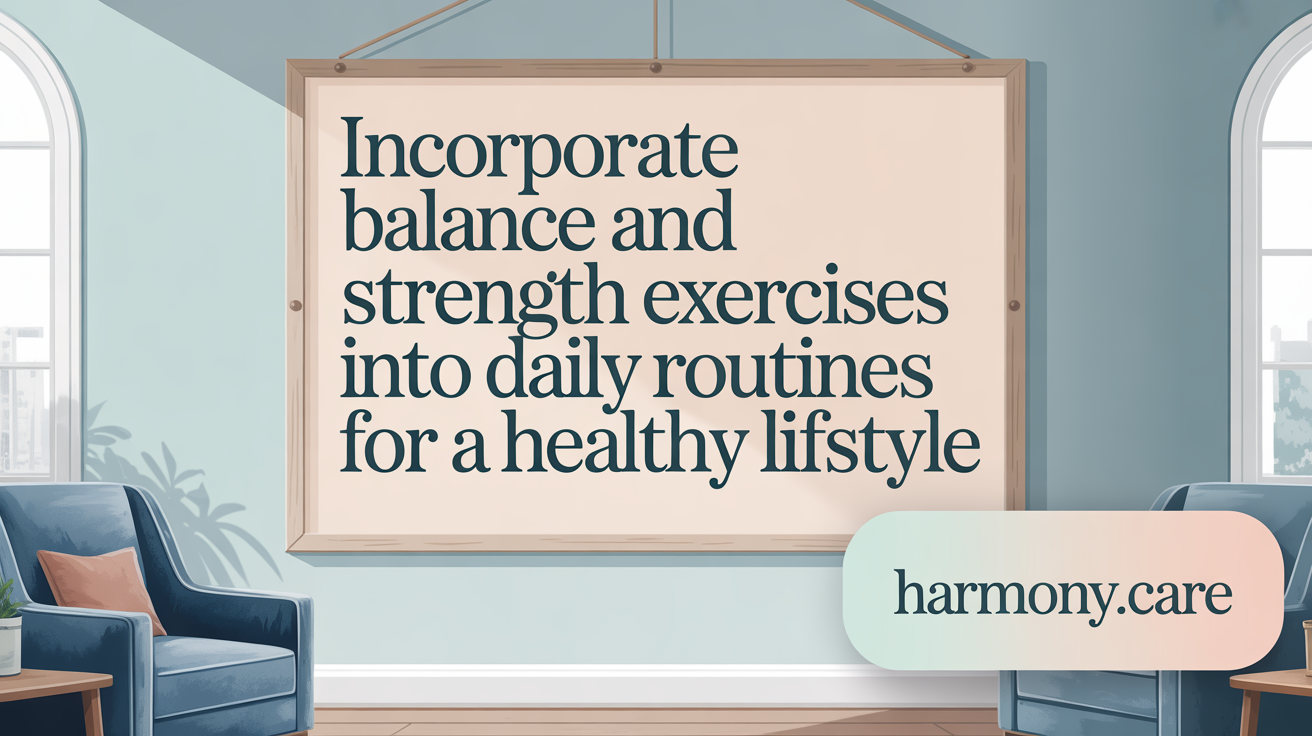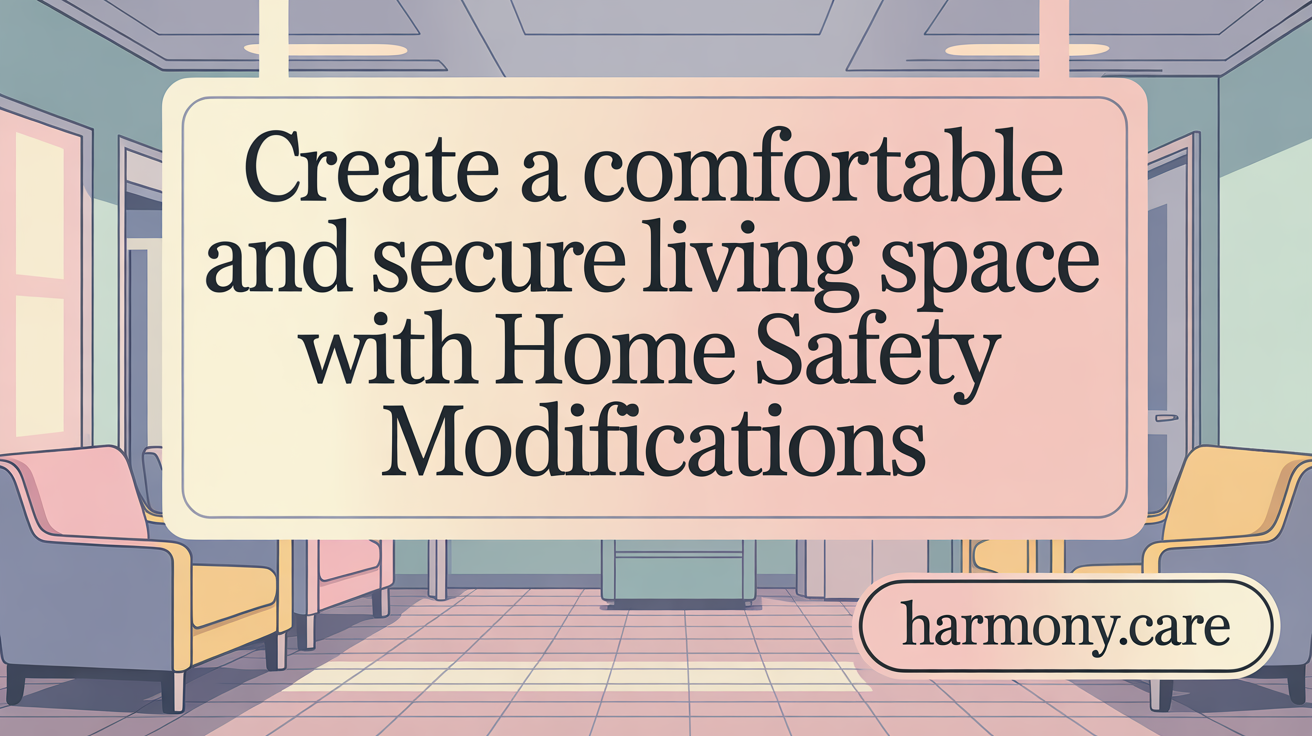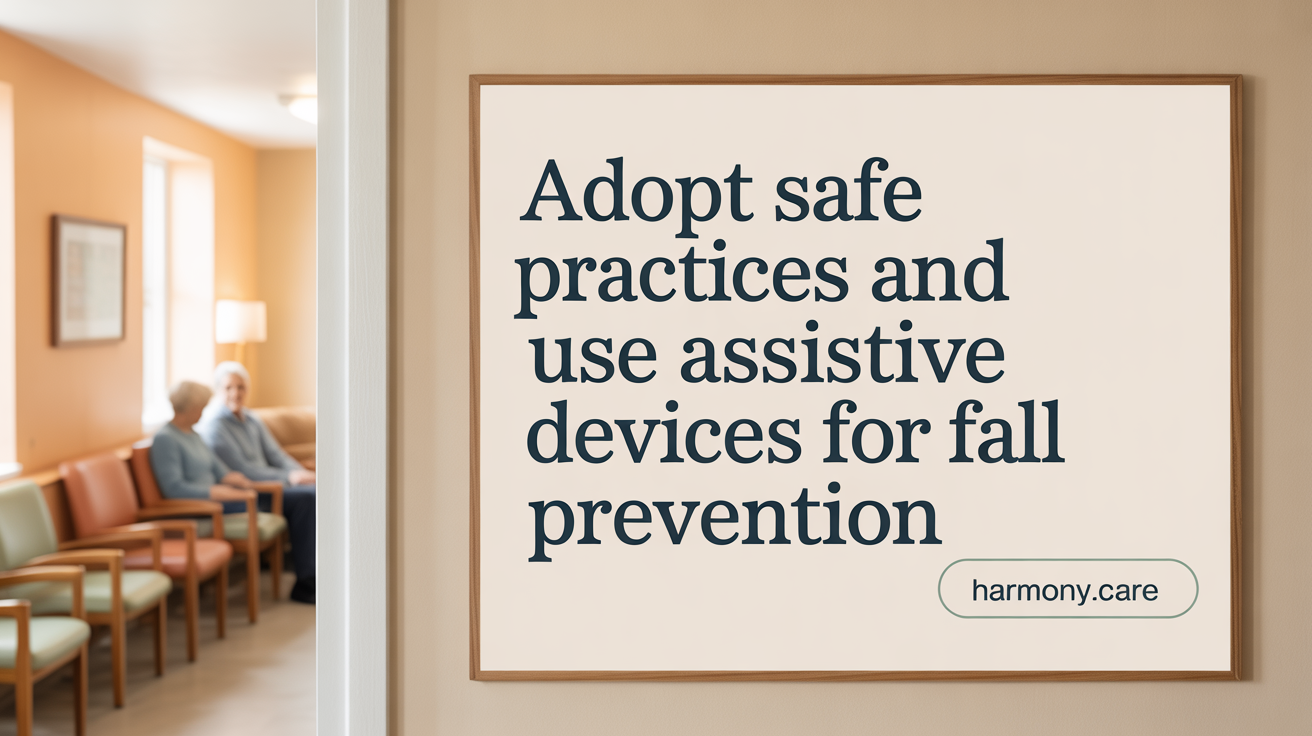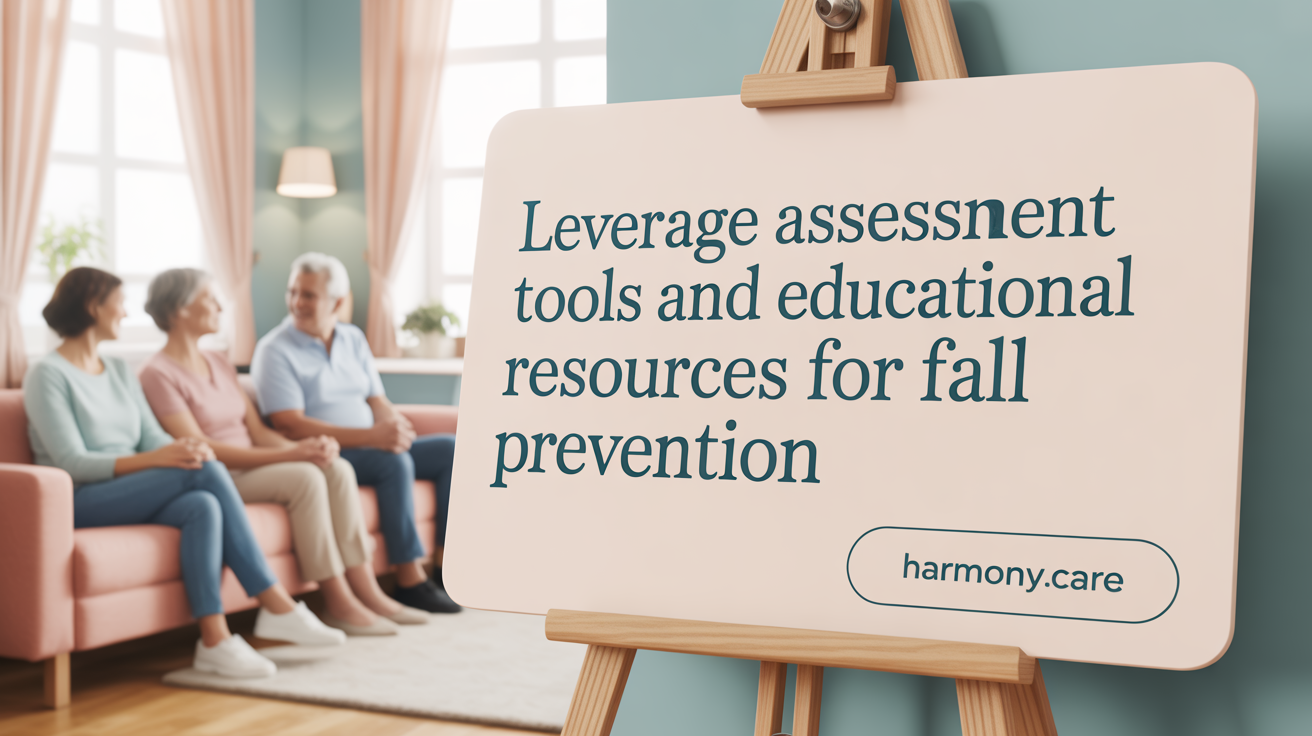Understanding the Importance of Fall Prevention
Falls are a leading cause of injury and hospitalization among older adults, significantly impacting independence and quality of life. With over a quarter of Americans aged 65 and older experiencing a fall each year, understanding fall risk factors and implementing preventive strategies is vital. This article provides practical, evidence-based tips and guidance to help older adults maintain safety, mobility, and confidence in their daily lives.
Identifying and Assessing Fall Risk Factors

What are the common risk factors for falls in older adults?
Older adults are at increased risk of falls due to a variety of factors. Physical impairments such as weakened muscles, poor balance, and unsteady gait significantly contribute to fall risk. Sensory deficits, including vision and hearing problems, can impair spatial awareness and coordination.
Medical conditions also play a crucial role. Osteoporosis increases fragility of bones, making fractures more likely if falls occur. Arthritis, diabetes, and cardiovascular issues can impair mobility and stability. Cognitive impairments, depression, and neurological disorders like Parkinson’s disease affect judgment and coordination.
Medication use is another important factor. Multiple drugs, especially psychoactive medications, sedatives, or those causing dizziness and confusion, elevate fall risk. Environmental hazards such as poor lighting, cluttered walkways, loose rugs, and unsafe flooring further increase chances of tripping or slipping.
Demographic factors such as age, gender (with women generally at higher risk), and social factors like living alone or having limited access to support also influence fall likelihood. Collectively, these factors underscore the importance of comprehensive assessments to identify individual risks and implement preventive measures.
Why is it important to review medications and conduct health assessments?
Regular health evaluations are vital in managing fall risk, particularly for reviewing medications. Certain drugs can cause side effects like dizziness or drowsiness, which impair balance. Annual medication reviews help healthcare providers adjust prescriptions to minimize these dangers.
Routine assessments of vision and hearing are equally important, as sensory impairments can lead to misjudging obstacles and uneven surfaces. Balance and mobility tests identify deficits that can be targeted through exercises or therapy.
These evaluations facilitate a personalized fall prevention plan. Addressing specific health issues, correcting visual or hearing impairments, adjusting medications, and recommending suitable assistive devices make a significant difference in reducing falls.
What could be indicated by an older adult repeatedly falling?
Repeated falls often signal underlying health problems needing attention. Causes may include balance disorders, muscle weakness, or neurological issues such as Parkinson’s disease, which affect movement and stability.
Vision and hearing impairments can contribute, as they reduce environmental awareness. Side effects from medications, especially those causing dizziness or lower blood pressure, are common contributors.
Environmental factors like cluttered homes, poor lighting, or improper footwear further elevate risk. Certain health conditions, including diabetes-related neuropathy, blood vessel issues, or postural hypotension, can cause dizziness or fainting episodes.
Persistent falls warrant medical evaluation to uncover root causes. This approach allows for targeted interventions — from medication adjustments and home modifications to strength and balance training — ultimately reducing the likelihood of future falls and enhancing quality of life.
Incorporating Effective Physical Activities for Fall Prevention

How can physical activities help prevent falls in older adults?
Physical activities such as walking, water workouts, and Tai Chi play a vital role in fall prevention for older adults. These exercises improve strength, balance, coordination, and flexibility—key factors that contribute to stability and prevent falls. Regular movement helps maintain mobility and reduces muscle weakness, which is a common risk factor for falls.
In addition to engaging in physical activity, making home safety modifications significantly decreases fall risks. For example, removing clutter, securing loose rugs, and installing grab bars in bathrooms help create a safer environment.
Using properly fitting, sturdy shoes with nonskid soles and incorporating assistive devices like canes or walkers can also support stability. Combined, these strategies—a mix of exercise and environmental safety—offer a comprehensive approach to reducing falls among older adults.
Recommended types of exercises and routines
To effectively prevent falls, older adults are encouraged to participate in balance and strength training exercises at least three times weekly for a minimum of 12 weeks. Popular routines include:
| Exercise Type | Description | Benefits |
|---|---|---|
| Tai Chi | Slow, flowing movements focusing on balance | Enhances coordination and muscle control |
| Sit-to-Stand | Sitting on a sturdy chair, leaning forward, then standing | Builds leg strength and improves postural stability |
| Balance exercises | Standing with feet apart, then together, or on one foot | Improves core strength and stability |
| Dynamic movements | Walking, water workouts, or gentle aerobics | Promotes cardiovascular health and overall strength |
Experts recommend holding each position for 10 to 30 seconds and performing five repetitions twice daily. Support or supervision is advised when practicing balance exercises to ensure safety.
Combining exercise with home safety measures
Exercise alone cannot eliminate fall risks; thus, combining physical activity with modifications in the home environment enhances safety. Example measures include:
- Installing secure handrails on stairs and in bathrooms
- Ensuring proper lighting with night lights and accessible switches
- Keeping walkways clear of clutter and loose rugs
- Using non-slip mats and grab bars where needed
These community resources and programs can provide additional guidance and support in planning an effective fall prevention routine. Regular health assessments, including vision, hearing, and medication reviews, further complement these efforts to keep older adults safe and maintaining independence.
This proactive approach—integrating tailored exercise routines with home safety improvements—serves as a strong defense against falls and enhances quality of life for seniors.
For more information, search terms such as "exercise programs for fall prevention in seniors" can provide additional resources and community program options.
Modifying the Home Environment to Minimize Fall Hazards

What environmental modifications can reduce fall hazards for older adults at home?
Creating a safe home environment is vital in preventing falls among seniors. Practical modifications focus on reducing clutter, improving lighting, and installing supportive fixtures.
One of the most effective changes is installing sturdy handrails on both sides of stairways, ensuring they are firmly attached and easy to grip. These handrails provide stability when going up or down stairs, reducing the risk of falls.
Adequate lighting is also essential. Bright, well-placed light switches at both the top and bottom of stairs, along with night lights in bedrooms and bathrooms, help seniors see clearly in low-light conditions. Motion-activated lights can offer additional safety by illuminating dark areas automatically.
Bathroom safety measures include installing grab bars near toilets, inside and outside showers, and bathtubs. Using non-slip mats or strips in wet areas prevents slipping. A shower chair and curbless showers make bathing safer and easier.
Keeping walkways free of clutter, cords, and loose rugs minimizes tripping hazards. Securing carpets with non-slip pads and removing small, unstable rugs help maintain steady footing. Outdoors, ensuring pathways are clear, well-lit, and free of ice or debris provides safe access.
Additional outdoor tips encompass installing proper porch lighting, securing outdoor stairs, and spreading salt or sand in icy weather to prevent slips.
By making these simple yet effective modifications, older adults can greatly reduce their fall risks, maintain independence, and enjoy safer surroundings.
| Modification Area | Specific Measures | Purpose/Benefit |
|---|---|---|
| Stairs and Handrails | Install sturdy, secure handrails on both sides | Increased stability and support during stair use |
| Lighting | Bright lights, night lights, motion sensors | Enhanced visibility; reduces accident-prone areas |
| Bathroom Safety | Grab bars, non-slip mats, shower chairs | Prevent slips and falls during bathing |
| Floor Safety | Remove clutter, secure rugs, improve flooring | Minimize tripping hazards |
| Outdoor Pathways | Clear debris, add lighting, salt/sand for ice | Safe outdoor navigation |
Fall prevention starts at home. Implementing these modifications can make living spaces safer and more accessible, helping older adults stay active and independent with confidence.
Health Practices, Safety Behaviors, and Assistive Strategies
 What practical interventions are effective for preventing falls in older adults?
What practical interventions are effective for preventing falls in older adults?
Effective measures to prevent falls include a combination of exercise, home safety adjustments, and health management. Engaging in activities like tai chi, strength, and balance training can significantly improve stability and coordination. Establishing a fall prevention plan that involves regular assessments of vision, hearing, and mobility helps identify risks early. Modifying the home environment by removing loose rugs, ensuring proper lighting, and installing grab bars or handrails can reduce common hazards. Regular medication reviews are crucial to minimize side effects such as dizziness or low blood pressure that increase fall risk. Addressing vitamin D deficiency, managing chronic conditions, and educating both patients and caregivers further strengthen prevention efforts.
What health practices and safety behaviors promote fall prevention in older adults?
Promoting safety involves consistent health practices like routine physical activity tailored to improve strength and balance, along with regular checkups for vision and hearing. Implementing home safety behaviors such as keeping pathways clear of clutter, repairing uneven flooring, and installing adequate lighting helps create a safer living space. The proper use of assistive devices like walkers and canes, along with wearing non-slip footwear, supports stability. It is also important to manage medications carefully with healthcare providers to avoid side effects that impair balance. Being mindful of pets and household clutter also plays a role in reducing fall risks. Overall, staying active, vigilant about health, and maintaining a safe environment are essential strategies in preventing falls among older adults.
Utilizing Resources, Nursing Interventions, and Frameworks for Fall Prevention
 What resources and tools are available for evaluating fall risk and implementing prevention programs?
What resources and tools are available for evaluating fall risk and implementing prevention programs?
Healthcare providers have access to a variety of validated assessment tools to identify individuals at higher fall risk. Notable examples include the Morse Fall Scale, which measures factors like history of falls and gait, and the Timed Up and Go Test, which evaluates mobility and balance by timing an individual's ability to rise, walk, and sit. Reputable organizations such as the Centers for Disease Control and Prevention (CDC) offer resources like the 'Steadi Evaluation Guide' and the 'Fall Prevention Toolkit.' These include screening checklists, educational materials, and intervention strategies suitable for clinical and community settings.
Educational materials such as brochures, videos, and checklists in multiple languages (English and Spanish) help inform patients and caregivers about fall risks and prevention methods. The Veterans Affairs (VA) has developed comprehensive toolkits with risk assessment tools, intervention protocols, and visual aids, which support the implementation of tailored fall prevention programs. Collectively, these resources enable systematic risk assessment, patient education, and personalized intervention planning, helping to reduce fall incidence among older adults.
What is the significance of the 4 P's and 5 P's in fall prevention strategies?
The 4 P's and 5 P's are practical frameworks used to guide comprehensive fall risk assessments and prevention strategies. The 4 P's—Pain, Position, Placement, and Personal Needs—help caregivers identify issues related to discomfort, proper body positioning, environmental placement of furniture and objects, and individual care necessities that may contribute to falls.
Expanding this approach, the 5 P's include Pain, Potty, Periphery, Position, and Pump. This framework emphasizes addressing urinary needs ('Potty'), sensory and peripheral concerns ('Periphery'), circulatory and blood flow issues ('Pump'), along with pain and positioning, to create a detailed assessment of possible fall triggers. These frameworks facilitate personalized care plans by highlighting modifiable risk factors, guiding environmental modifications, and improving safety for older adults. The structured approach promotes proactive measures to prevent falls and related injuries.
How can nursing interventions contribute to fall prevention in older adults?
Nurses play a crucial role in fall prevention by conducting thorough risk assessments using tools like the Morse Fall Scale and implementing individualized prevention strategies. This includes making environmental modifications such as improving lighting, removing clutter, and installing grab bars and nonslip mats. Educating patients and families on safe mobility practices, assistive device usage, and medication impacts further reduces risk.
Regular supervision through techniques like hourly rounding, assistance with toileting, and support during walking are essential nursing actions. Collaboration with physical therapists to develop strength and balance programs and pharmacists to review medications minimizes fall hazards associated with side effects. Technology solutions, such as alarm systems and wearable sensors, enhance safety. Promoting physical activity, including balance exercises like Tai Chi, not only strengthens muscles but also improves confidence and stability, significantly lowering fall risk. These coordinated nursing efforts are vital for creating safe environments and empowering older adults to maintain independence.
Staying Safe and Independent Through Proactive Fall Prevention
Preventing falls among older adults requires a multifaceted approach involving personal health assessment, physical activity, home safety modifications, medication management, and the use of supportive resources. By understanding common risks and adopting proven strategies—including structured exercise, environment adjustments, and regular medical evaluations—older adults can maintain their mobility and independence. Collaboration between individuals, caregivers, healthcare professionals, and community programs enhances fall prevention efforts. Empowered with practical tips and available tools, seniors can confidently reduce their fall risk and enjoy safer, healthier lives.
References
- Fall prevention: Simple tips to prevent falls - Mayo Clinic
- Tip Sheet: Preventing Falls | HealthInAging.org - Health in Aging
- Fall Prevention: Balance and Strength Exercises for Older Adults
- Preventing Falls: Strategic Advice for Older Adults - Stoughton Health
- 6 Steps to Help Prevent Falls in Older Adults
- About Older Adult Fall Prevention - CDC
- Preventing Falls at Home: Room by Room | National Institute on Aging
- Preventing Falls in Older Adults - MyHealth Alberta
